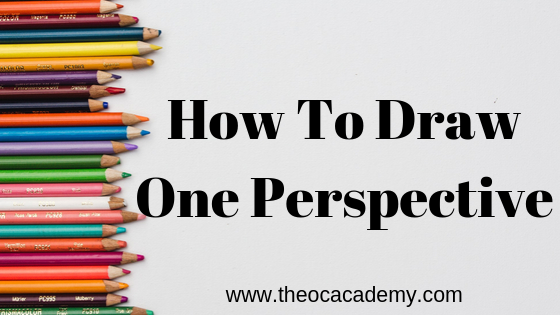It is safe to say that as an artist, your work means something to you, better yet it means a lot; so it makes sense that you want to protect it. In this article, I will be going over 13 useful tips that can help you to protect your work from theft.
Please note that none of these tips are 100% foolproof. When you put your work online you are subjecting it to possible theft. However, these tips will make it less likely for your work to be stolen because your images may become less appealing.
Use a low resolution
Of course, we are taught, draw at a higher resolution to maintain the integrity of your work. You want to make it printable, you want to avoid it looking pixelated or grainy. However, the downside of doing so it that you make it easier for your work to be stolen. Which is why shrinking your work before sharing it on social media. Uploading your work at a low resolution will decrease loading time and makes for terrible print quality.
A Few Take-Aways:
- The recommended resolution for sharing your work online is no more than 72 DPI.
- This would then translate into an image that is around 300 x 800 pix or 800 x 300 pix depending on it's the orientation of the image.
- This can also translate into an image that is 4 x 11 inches or 11 x 4 inches again, depending on the orientation of the image.
- Please Note: that these sizes may not work for all works so adjust accordingly, just remember the target DPI is no larger than 72.
 |
| This is a Landscape Oriented 4 by 11 image It looks good on screen but is not ideal to print. |
Crop Your Images
Don't share the whole image. Select an interesting angle and share it. Better yet, crop the image so that the entire work is not seen. This is another way to tell if someone is taking your work because they would not have the original, thus the unedited version will still remain within your possession.
Sign Your Work
This should come off as a no brainer but you will be surprised how often even I forget to sign my work (even if it is just a simple sketch). One of the best ways that I have found when it comes to signing your work is to do o within the image itself. I usually sign my name on one of my characters if not within close proximity to them, like the contour of their bodies or figure.
Add a Watermark
Now, this is a more drastic approach, but you can always throw a watermark slap on your work to show that it is yours. Many stock photo sites use this method all the time and they still receive traffic to their images, however like anything else listed watermarks can be removed, sure it does take some time and the image may become distorted in the process. But if someone wants your work bad enough they will go through the process of removing it.
Keep a record of your originals
This has to be one of the safest ways that you can protect your work. Keep the originals, heck, I would say go as far as to keep your references as well. This way you have proof that the work is yours.
For best practices keep the following bits of information about your artwork
- Title
- Dates (Start Date, Completed Date, and Published Dates)
- A brief summary of the work
- List of the mediums
- Make note of the inspirations and references associated with the work
- Make note of where you shared it
- Make note of the copyright you are attaching to this work
Add a Copyright Notice
Now, this starts to get into the legal sauce. I am not a lawyer and I am not giving out legal advice. If you want legal advice to retain a lawyer. With that said, a copyright notice will set the intentions of your work.
When you are adding a copyright notice it is good to know what kinds of licenses are available. A copyright license establishes what the work in question may or may not be used for. I use creativecommons.org when I have work that I wish to attribute license to.
Types of Copyright Licences
- Attributions
- Attribution - ShareAlike
- Attribution - NoDerivs
- Attribution - NonCommerical
- Attribution - NonCommerical-ShareAlike
- Attribution-NonCommerical-NoDerivs
Creativecommons.org even offers a License Tool which allows you to choose a license and generate an icon that indicates the uses for your work. I have seen a few creators use these icons on their websites, especially when they have online portfolios.
For more literature on this topic, here are some resources
- Circular 3 Copyright Notice PDF
- The United States Copyright Office Website
- Creative Commons Website
- Creative Commons License Tool
Register Your Work
The United States Copyright Office allows you to protect your work by registering it with them. This will allow you protections such as compensation for damages acquired via someone else's use or theft of your work. The larger you become, the more of a big deal this option may become to you, but again, I am not a lawyer and you should seek legal counsel on the matter.
For more literature on this topic, here are some resources
- The United States Copyright Office Website
- The United States Copyright Office Visual Art Registration Information
Document and Report Stolen Work
This part may work in your favor because it will help you build a case against whoever is taking your work. This case doesn't have to be a legal case, it can be a case in the sense that you put out a bolo to your audience on social media or filing a complaint to the hosting site where your work is being shared without consent.
How To Report Posts On Social Media
Know The Terms and Conditions of Where You Are Posting
It is one thing to post on your own website, it is another to share it on facebook then get upset because someone else liked it and shared it with a group. When you post to social media it is assumed to some degree that your work is being posted to be shared. Or at least to attract some degree of attention for your or your brand. You need to know how the website that you are posting your work on will be using or curating your work. So it is best to read the terms and conditions before sharing your work.







0 Comments